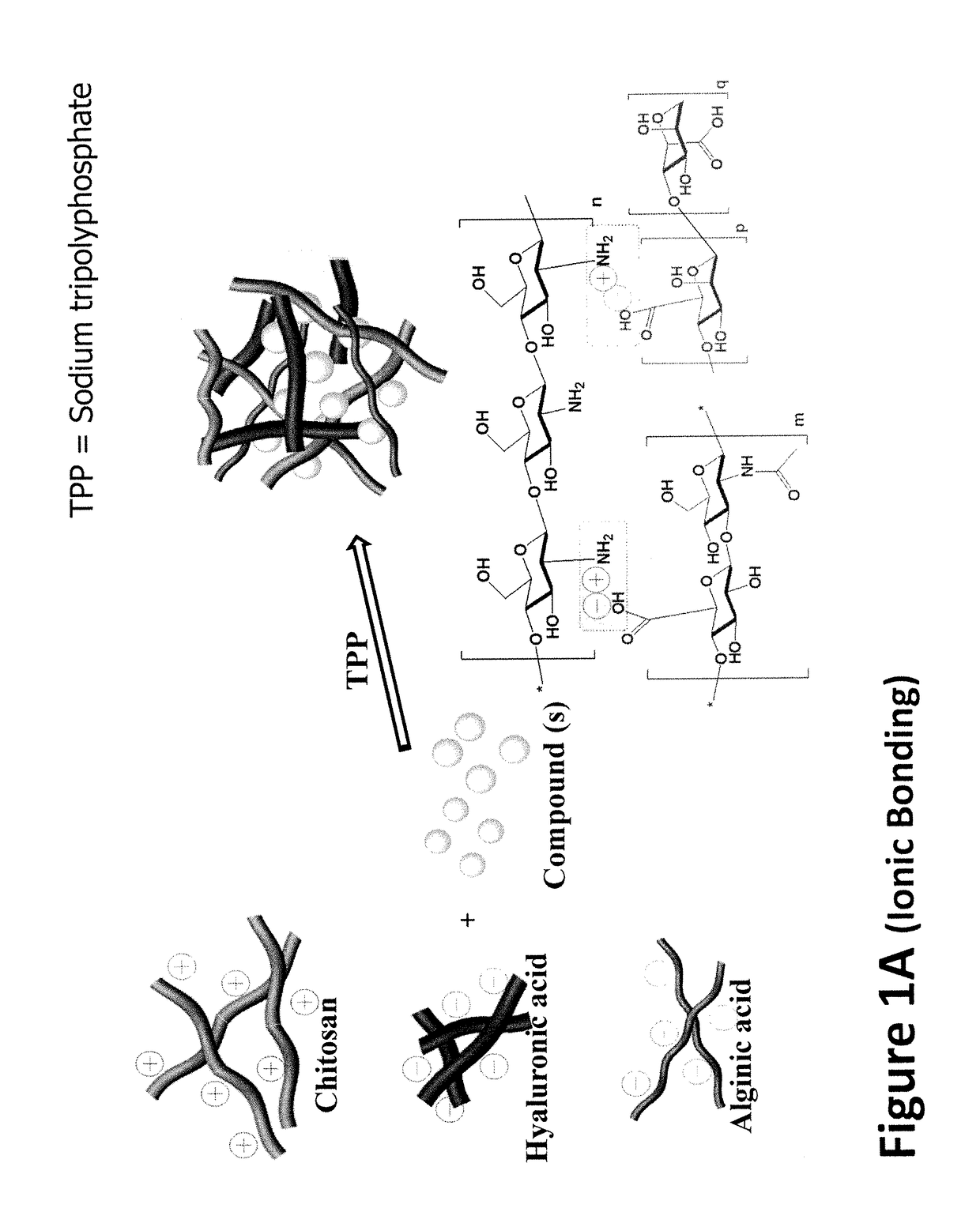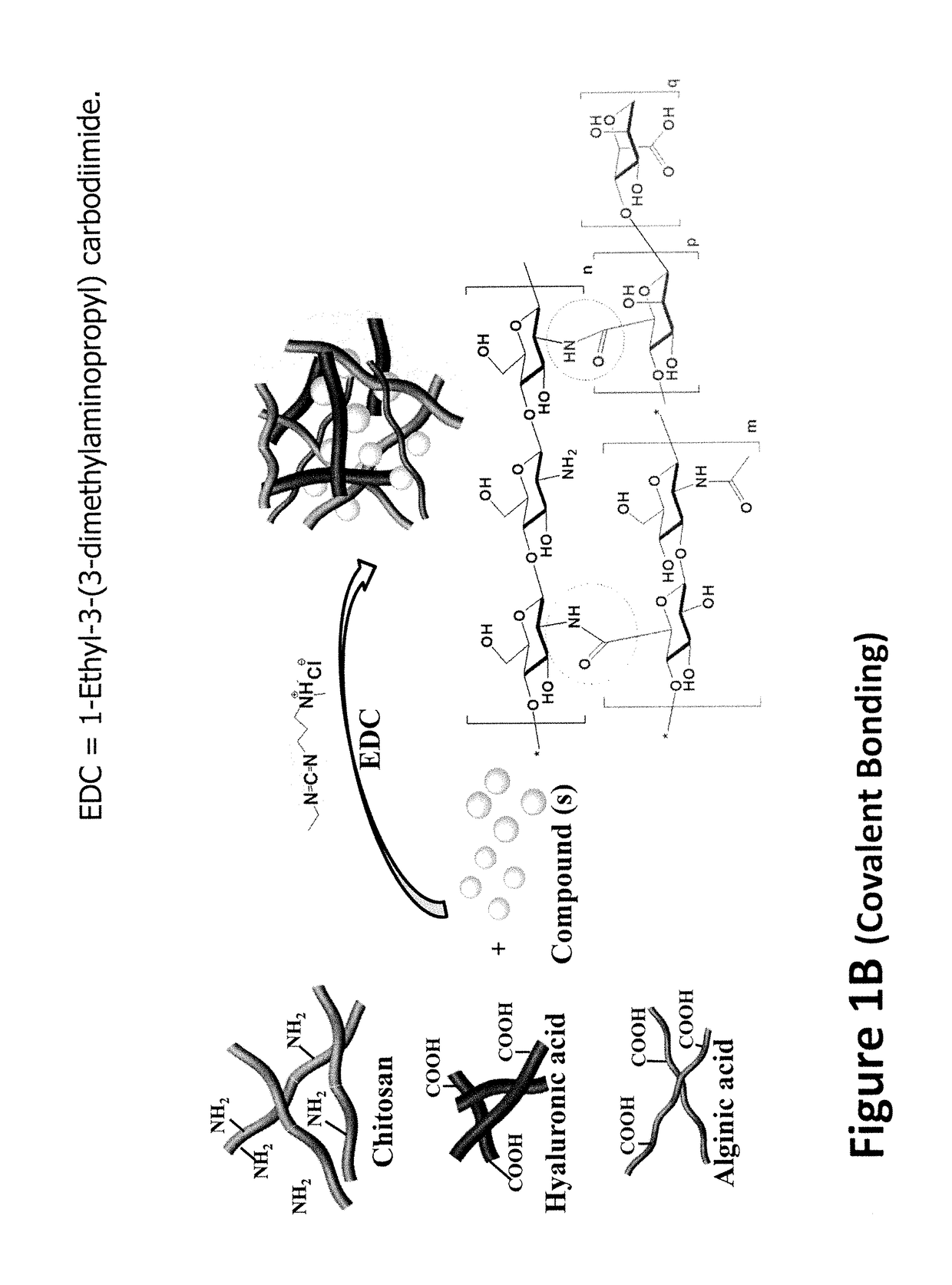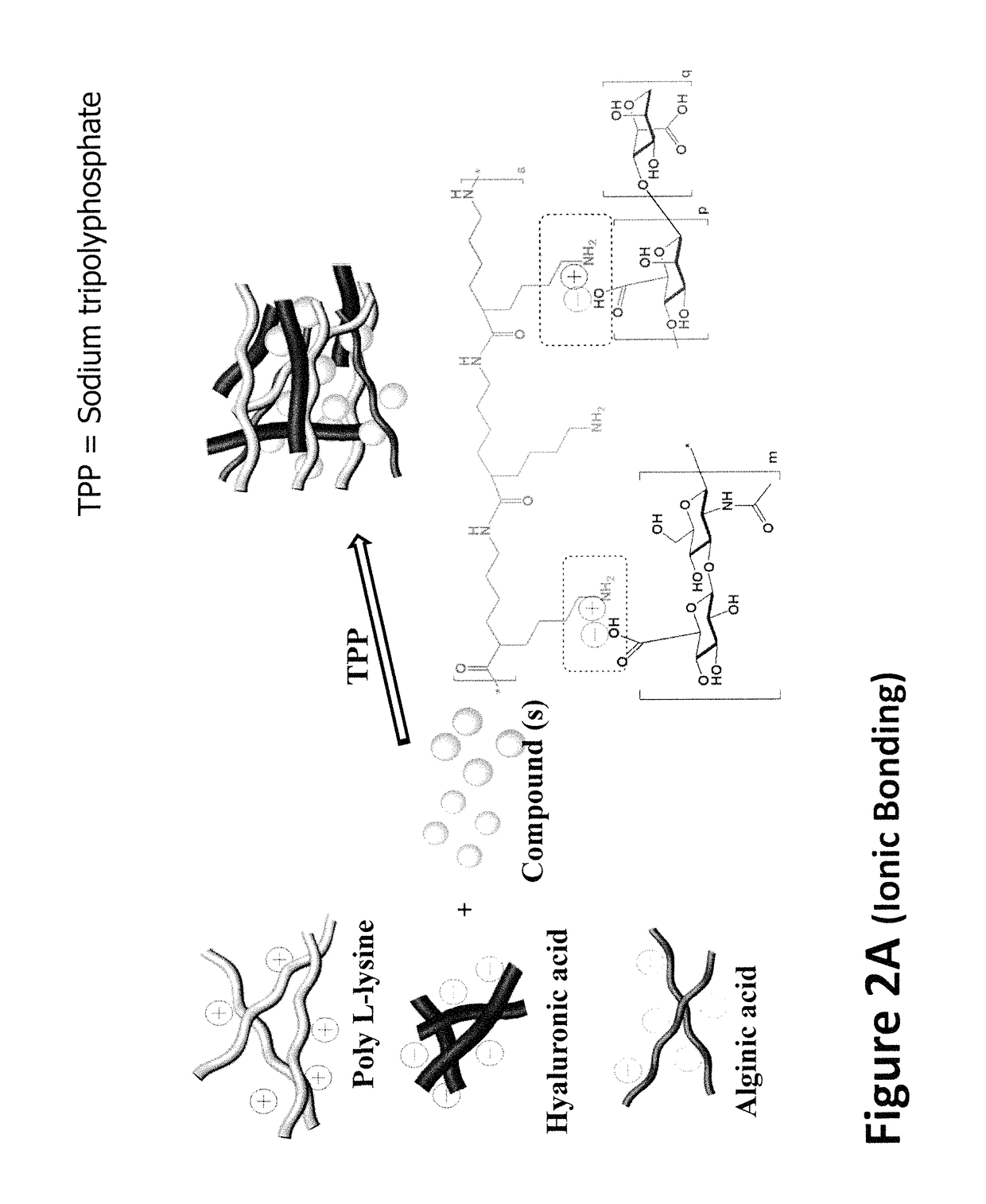Composition and method for stopping hemorrhage, infection, and accelerating healing in various types of wound or burns
a technology of hemorrhage and infection, applied in the direction of enzymes, peptidases, alkali/alkaline-earth metal chloride active ingredients, etc., can solve the problems of multiple organ failure, life-threatening infections, medical cascade,
- Summary
- Abstract
- Description
- Claims
- Application Information
AI Technical Summary
Benefits of technology
Problems solved by technology
Method used
Image
Examples
example 1
emorrhage Control in Swine Liver Model
[0103]There is no universal animal model for testing efficacy of a topical hemostat available because trauma bleeding presents itself in different forms ranging from arterial injury with high pressure to massive oozing. Large animal models (e.g., pigs) are representative models for the human situation.
[0104]Liver injuries were induced. The method included the following. The liver was retracted by manually elevating the left and right medial lobes to allow adequate exposure. Next, a specially designed clamp with two 4.5 cm sharpened tines configured in the form of an ‘X’ was positioned with the center approximately 2-3 cm dorsal to the intersection of the left and right medial lobes, on the diaphragmatic surface of the liver. The base plate of the instrument was positioned beneath the quadrate lobe, on the visceral surface. The injury was induced by clamping the tines of the instrument through the parenchyma and underlying vessels of the two medi...
example 2
Thrombelastography (Clot Kinetics)
[0107]Thrombelastography techniques, which are commonly used in the clinical laboratory for monitoring coagulation functions, were utilized. Siliconized Vacutainer tubes (Becton Dickinson, Rutherford, N.J.) were used to collect whole blood. To maintain a ratio of citrate to whole blood of 1:9 (v / v), the tubes contained 3.2% trisodium citrate. Blood samples were placed on a slow speed rocker until TEG analysis.
Thrombelastography (TEG)
[0108]Whole Blood Coagulation Analyzer, Model 5000 Thrombelastograph, Hemoscope Corporation, Skokie, Ill., was used. TEG is based on the measurement of the physical viscoelastic characteristics of blood clots. An oscillating plastic cylindrical cuvette (“cup”) and a coaxially suspended stationary piston (“pin”) with a n clearance between the surfaces are used to monitor clot formation at 37° C. Every 4.5 seconds, with a 1-second mid cycle stationary period, the cup oscillates in either direction, resulting in a frequency...
example 3
of Nano-Composites
[0113]The synthesized nano-composites have a size in a range of 100 nm to 1000 nm.
[0114]Cross linkage of chitosan / Poly L-Lysine to hyaluronic-alginic acid polymer was carried out where the nanoparticles encapsulating active compounds listed in Table 1 along with antimicrobial, pro-angiogenesis, and / or local anesthetic was synthesized by ionic gelatin method. To 15 ml solution of hybrid chitosan / Poly L-Lysine-hyaluronic-alginic acid polymer (5 mg / ml in DI water), 2 ml of active pro-coagulant compounds listed in Table 1, with or without (antibiotic, Lidocaine, pro-angiogenesis agent; 5 mg / ml in DI water), was added and stirred for half an hour. To this entire solution, 3 ml TPP (1 mg / ml in DI water) was added drop by drop and the entire solution was stirred for about 4 hours. This solution containing the nanoparticles was dialyzed using 20 KDa membrane to remove the un-reacted and non-encapsulated (active compounds). The dialyzed solution containing the nanoparticles...
PUM
| Property | Measurement | Unit |
|---|---|---|
| size | aaaaa | aaaaa |
| size | aaaaa | aaaaa |
| size | aaaaa | aaaaa |
Abstract
Description
Claims
Application Information
 Login to View More
Login to View More - R&D
- Intellectual Property
- Life Sciences
- Materials
- Tech Scout
- Unparalleled Data Quality
- Higher Quality Content
- 60% Fewer Hallucinations
Browse by: Latest US Patents, China's latest patents, Technical Efficacy Thesaurus, Application Domain, Technology Topic, Popular Technical Reports.
© 2025 PatSnap. All rights reserved.Legal|Privacy policy|Modern Slavery Act Transparency Statement|Sitemap|About US| Contact US: help@patsnap.com



